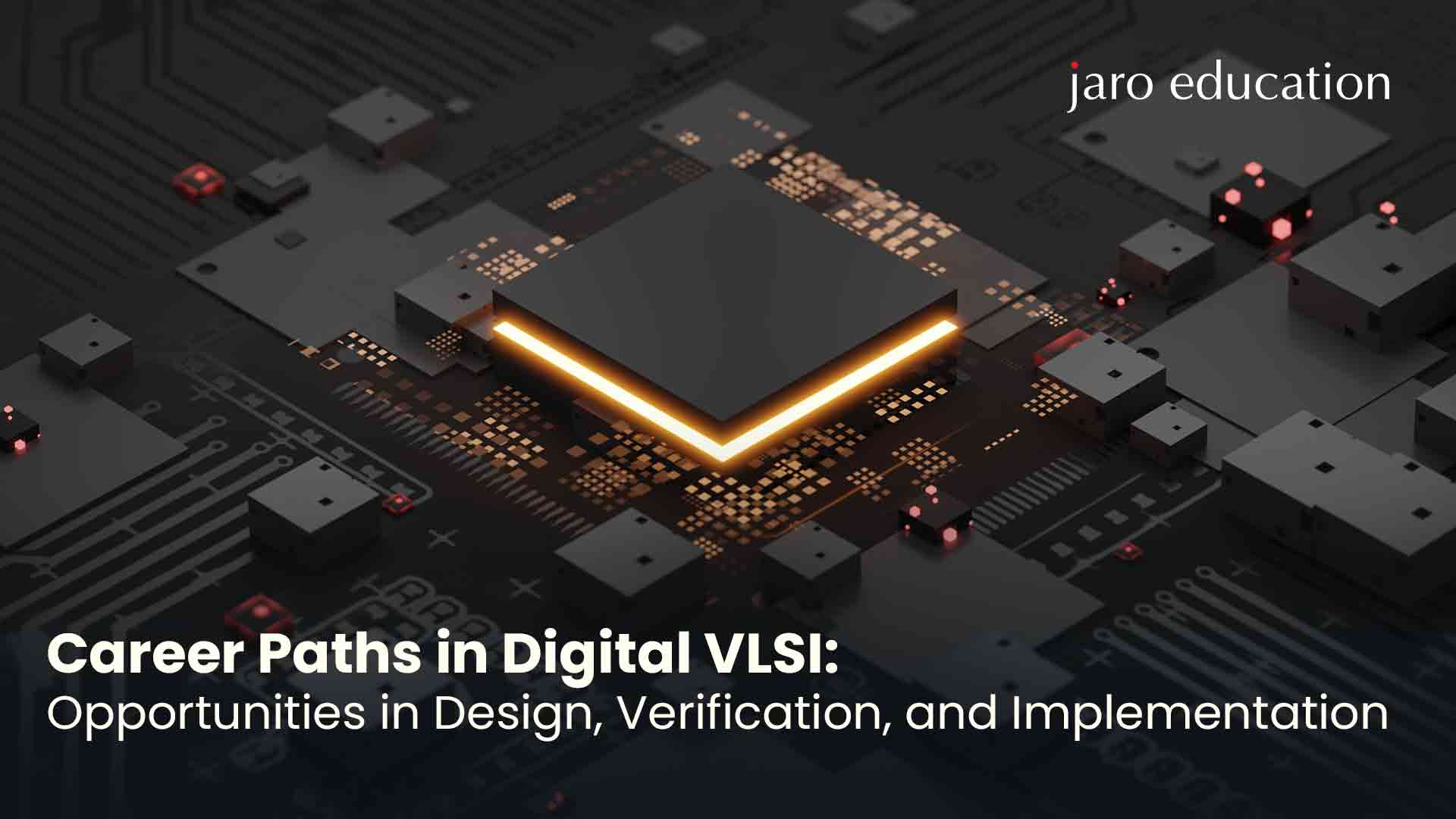
Career Paths in Digital VLSI: Opportunities in Design, Verification, and Implementation
Table Of Content
Understanding Digital VLSI
Top Career Options in Digital VLSI Field
Other Fields in Digital VLSI for Lucrative Job Opportunities
Emerging Trends in VLSI
Education and Training for VLSI Careers
Breaking into the Field
Final Thoughts
Understanding Digital VLSI
Digital VLSI, or Very Large Scale Integration, is the foundation of modern electronics and how they function. It involves the process of packing millions of tiny electronic components onto a small chip to make our devices smarter and more efficient. Everything from smartphones to smart appliances uses digital VLSI technology. It’s a vital component that drives innovation and provides power for our everyday gadgets.
The field includes semiconductor physics, digital logic systems, and computer-aided design (CAD). Over time, VLSI technology has evolved, resulting in more robust and efficient electronic systems. This has led to significant changes in the industry and made our everyday devices even more useful.
From VLSI design and verification to implementation, there are many exciting facets of digital VLSI. Based on their specific skills in electronic systems technology and area of interest, VLSI engineers can choose their field of specialization. The world of electronics is changing every day, and this has opened doors to various VLSI job opportunities with a better future scope. While the job salary of VLSI engineers might vary depending on your field and the present-day scenarios, there’s no denying that a career in VLSI offers a lucrative future for tech enthusiasts.
Top Career Options in Digital VLSI Field
Other Fields in Digital VLSI for Lucrative Job Opportunities
In addition to design, verification, and implementation, digital VLSI includes more areas important for the development of electronic systems, adding to existing VLSI job opportunities:
Testing and Testability
In the digital VLSI world, testing and testability are essential. They help ensure that the fabricated chips meet quality and reliability standards. Testing is about running diagnostic checks on integrated circuits to find any defects or malfunctions present within them. In this field, engineers create methods and tactics for thorough testing. This helps to locate faults and flaws in VLSI designs.
Physical Design
Physical design, at the transistor level, is about organizing and making better-integrated circuits. Engineers in the field focus on reducing power consumption while maintaining performance and functionality. They use techniques such as power gating, voltage scaling, and managing activity changes to decrease electricity usage in VLSI circuits. Physical design engineers use specific tools and algorithms to convert logical designs into physical layouts that satisfy performance goals.
Power Analysis and Optimisation
Power analysis and power optimisation are key factors when designing electronic systems that save energy. The work of VLSI engineers in this area concentrates on decreasing the amount of power used while keeping performance and function intact. They use power gating, voltage scaling, and handling activity changes to reduce electricity usage in VLSI circuits.
Emerging Trends in VLSI
The following trends greatly impact the ever-changing field of VLSI and its future scope.
The AI Integration
The VLSI industry is constantly improving with modern technology and changing market needs. New trends such as artificial intelligence (AI), machine learning, and the Internet of Things (IoT) have a significant impact on VLSI design now and in future use. Key trends pushing change in this field include design automation tools powered by AI, improvements with semiconductor materials, and merging VLSI technology into IoT devices.
Moreover, machine learning algorithms are improving the precision and speed of verification and testing methods. This leads to faster market entry with better design quality.
Sustainability Movement
The VLSI industry is transforming sustainability. With increasing concerns about environmental impact, there’s a growing concern for eco-friendly practices and energy-efficient solutions. Companies are working hard to reduce their carbon footprint by using VLSI design methods that save energy and materials that can be recycled. Also, the Circular Economy approach is changing how supply chains work, encouraging component reuse and recycling.
Sustainability is becoming a key motivator for creativity in VLSI, leading engineers to look into design and manufacturing methods that cause no harm to the environment.
Education and Training for VLSI Careers
Usually, people begin their VLSI career with a bachelor’s degree in electrical engineering, computer engineering, or something similar. Preparing for VLSI job opportunities requires a solid educational foundation and practical training in relevant tools and methods. Certificate Programmes like digital design, computer architecture, and semiconductor devices provide helpful insights and in-depth knowledge of VLSI principles and processes.
Many colleges have specific subjects or programs that focus on VLSI design and fabrication. These classes cover topics such as integrated circuit design, semiconductor manufacturing processes, and CAD tools. Also, you can use internet resources such as webinars and live lectures to improve your skills in VLSI for a high VLSI job salary and better scope.
Breaking into the Field
Final Thoughts
If you have a deep interest in technology and constantly seek innovation, then a digital VLSI career can offer thrilling opportunities. No matter if it is about design, verification, or implementation – the area of VLSI has challenges and benefits for anyone who is prepared to immerse themselves in the universe of integrated circuitry. If one pursues education, gathers hands-on experience, and keeps up with emerging trends, one can make a satisfying and significant career choice within the changing field of digital VLSI.
If you are intrigued by the scope of VLSI design and want to grow in the field, the Certificate Programme in Digital VLSI Design from CEP, IIT Delhi, can help you get started in your career. This certification course of 6-8 months is moduled to shape your VLSI design acumen and provide you with hands-on learning experience with daily live sessions and one-to-one interaction with expert faculties. You learn from real-life case studies and get exciting networking opportunities within the industry. Enroll now to avail this one-in-a-lifetime opportunity to carve a lucrative career in digital VLSI design.


